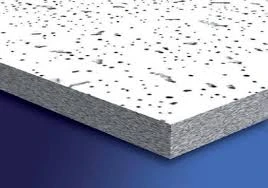Dec . 16, 2024 15:15 Back to list
ceiling grid tees
Ceiling Grid Tees An Overview of Essential Components for Suspended Ceilings
Ceiling grid tees play a crucial role in the modern construction and design of suspended ceilings, widely known for their aesthetic appeal and functional benefits. These metal components serve as the backbone of a ceiling grid system, and understanding their characteristics, types, installation methods, and applications is vital for architects, builders, and interior designers.
What Are Ceiling Grid Tees?
Ceiling grid tees are T-shaped metal strips that form the framework for suspended ceilings. They connect perpendicular main runners and create a grid layout that supports ceiling tiles, panels, and lights. Typically made from galvanized steel or aluminum, these tees are durable, lightweight, and easy to install, contributing significant structural integrity to ceiling systems while also being resistant to moisture and corrosion.
Types of Ceiling Grid Tees
There are various types of ceiling grid tees available, each designed for specific applications
1. Main Tees These are the primary members of the ceiling grid, running along the longest dimension of the room. They support the cross tees and provide the main structural layout.
2. Cross Tees Installed perpendicular to the main tees, cross tees create the grid pattern that holds ceiling tiles in place. They come in various lengths, usually ranging from 2 feet to 4 feet.
3. Angle Tees These tees are often used to create vertical transitions or to connect to walls, offering additional support and a clean edge finish.
4. Moldings and Perimeter Tees These components frame the grid while providing a finished look. They are essential for achieving a seamless appearance and can be integrated with lighting fixtures.
Installation of Ceiling Grid Tees
The installation process for ceiling grid tees is relatively straightforward, but it requires careful planning and execution to ensure a level and secure ceiling system
.ceiling grid tees

1. Preparation and Measurement The first step involves measuring the room and determining the layout of the ceiling grid. A chalk line is often used to mark the desired height of the new ceiling.
2. Hanging the Main Tees The main tees are suspended from the existing ceiling using wire hangers. These hangers should be spaced appropriately, typically every 4 feet, to provide adequate support.
3. Adding Cross Tees Once the main tees are in place, cross tees are inserted into the slots of the main tees. This grid formation allows for the insertion of ceiling tiles or other panels.
4. Final Adjustments After the grid is installed, it's essential to check for levelness and make any necessary adjustments. Adding molding or trim can complete the installation and enhance the overall look.
Applications of Ceiling Grid Tees
Ceiling grid tees are prevalent in various settings, including commercial and residential spaces.
1. Office Spaces They allow for the integration of lighting systems and HVAC ducts, making them ideal for modern office environments.
2. Retail Stores Their versatility enables flexible design options and easy changes, accommodating different layouts and displays.
3. Schools and Hospitals In these settings, the ability to access the infrastructure above the ceiling—like wiring and piping—while maintaining an aesthetically pleasing environment is crucial.
4. Residential Homes Homeowners often utilize ceiling grid systems to create modern, sleek looks in living spaces or basements, benefiting from added sound insulation and fire resistance.
Conclusion
Ceiling grid tees may seem like small components in the grand scheme of a building project, but they are fundamental to achieving not only the desired aesthetic but also the functional requirements of suspended ceilings. Their variety, ease of installation, and wide range of applications make them indispensable in contemporary architecture and interior design. Overall, understanding and selecting the right ceiling grid tees can significantly impact the quality, durability, and style of any ceiling project. As design trends continue to evolve, so too will the innovations surrounding these vital components.
-
Quality Ceiling Trap Doors & Access Panels | Easy & Secure AccessNewsAug.30,2025
-
Durable Ceiling T Grid Systems | Easy InstallationNewsAug.29,2025
-
PVC Gypsum Ceiling: Durable, Laminated Tiles for Modern SpacesNewsAug.28,2025
-
Pvc Gypsum Ceiling Is DurableNewsAug.21,2025
-
Mineral Fiber Board Is DurableNewsAug.21,2025
-
Ceiling Tile Clip Reusable DesignNewsAug.21,2025







